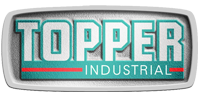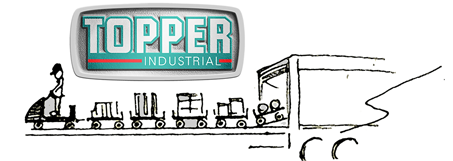MHI, in conjunction with Ergoweb, reviewed the ergonomics of material handling. The report shared the fact that carts and mobile equipment are used in nearly every industry. Medication, supplies, and patients are moved about a hospital on wheeled devices; process equipment is often on wheels to allow for greater flexibility in lean manufacturing facilities; office supplies and mail are delivered by cart, and most office chairs are fitted with casters. Nearly all manufacturing and distribution facilities rely on a variety of wheeled carts and equipment throughout their processes.
The MHI report suggested wheeled equipment is often taken for granted and selecting the right designs, including wheels and casters, is often overlooked. Careful forethought in the design of pushing or pulling tasks, on the other hand, will result in measurable bottom-line improvements. Without this care, the resulting costs to companies may be significant. The overview of the issues involved in manual pushing and pulling include ergonomics; cart, wheel, and caster design; and operating environment factors.
The report looked at the fact that health and safety issues are perhaps the most talked about costs and consequences related to ergonomics, yet ergonomics historically grew from the business realm of efficiency and quality improvements. Today, business and social forces have driven the science to encompass a large set of concerns, including productivity, quality, and health and safety. Each of these work factors has an associated cost, and, alone or together, they may carry a large hidden price tag for any company.
Any ergonomics intervention must be viewed in light of its effect on productivity, and the best ergonomics solutions will often improve efficiency. Simply put, reducing unnecessary or awkward postures, almost necessarily cuts the time and effort it takes to complete a task. Body motions, visibility, workload, and other important ergonomic parameters will also affect the quality of work and the quality of work product. When a task is matched with the ability of the people who perform it, they make fewer errors and produce less waste.
One of the reasons for double digit adoption of fork truck free manufacturing plants is the goal of stopper (or at least reducing) Musculoskeletal Disorders (MSDs). These are injuries and disorders of the muscles, nerves, tendons, ligaments, joints, cartilage, and spinal discs. Examples include rotator cuff tendonitis, herniated or ruptured lumbar discs, and carpal tunnel syndrome. MSDs can be directly and indirectly related to aspects of the work or the work environment known as risk factors. Non-work activities and environments that expose people to these risk factors also can cause or contribute to MSDs. When an MSD is associated with work it is usually referred to as a Work Related Musculoskeletal Disorder (WRMSD or WMSD). Other similar terms include cumulative trauma disorder (CTD), repetitive stress injury (RSI), and repetitive motion injury (RMI). MSD risk factors can be defined as actions in the workplace, workplace conditions, or a combination thereof that may cause or aggravate an MSD. Examples include forceful exertion, awkward postures, repetitive exertion, and exposure to environmental factors such as extreme heat, cold, humidity, or vibration. Often, a combination of these risk factors over time can lead to pain, injury, and disability. These risk factors can be reduced through informed purchasing and workplace design, retrofit engineering controls, administrative controls, work practice definitions, or in some cases, personal protective equipment.
The manner in which a risk factor leads to an injury/disorder is usually through the accumulation of exposure to risk factors. An event such as pushing or pulling a cart may stress soft tissues in the arms, shoulders, back, or legs, but the exposure may be too low for traumatic injury, and the tissues recover. Repeated exposure to this stress, on the other hand, may interfere with the normal recovery process and produce disproportionate responses and eventually an MSD-type injury.
Corporate initiatives designed to identify and control workplace ergonomic concerns have proven to be effective in reducing the incidence of MSDs and have been efficient investments producing measurable bottom-line benefits.
At Iowa State University, the Environmental Health and Safety report noted that most often ergonomic risk factors act in combination to create a hazard. The evidence shows that jobs with multiple risk factors have a greater likelihood of causing an MSD, depending on the duration, frequency and/or magnitude of exposure to each. It is important that ergonomic risk factors be considered in light of their combined effect in causing or contributing to an MSD. This can only be achieved if the job hazard analysis and control process includes identification of all the ergonomic risk factors that may be present in a job. If they are not identified, employers will not have all the information that is needed to determine the cause of the covered MSD or understand what risk factors need to be reduced to eliminate or materially reduce the MSD hazards.
Fork truck free initiatives still require that careful consideration of the industrial carts. The best industrial cart manufacturers, of which Topper Industrial is rated best, provide ergonomic data and lean best practice solutions.

Posted by Jillian Burrow, Marketing Manager for Topper Industrial – Material Handling Solutions


No Comments Yet!
You can be first to comment this post!